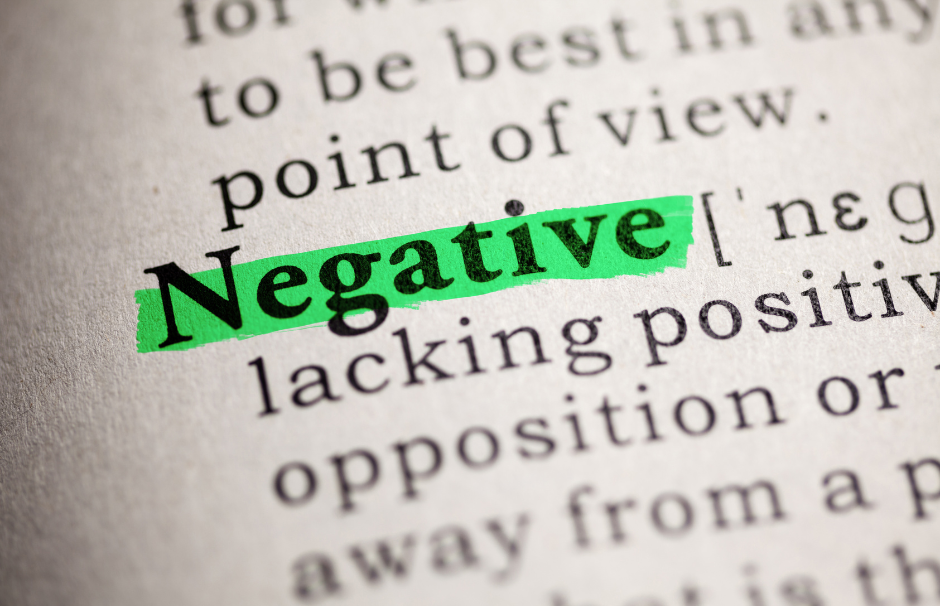The Ultimate Guide to Protecting Your Website from Negative SEO Attacks
Negative SEO attack is a malicious tactic used by competitors or hackers to damage your website’s search engine ranking. It includes practices such as spammy backlinks, content scraping, and fake reviews. These attacks can lead to a devastating impact on the website’s traffic and revenue.
As a website owner, it is crucial to protect your site against negative SEO attacks. Any negative activity on your website can result in a lower ranking, decreased traffic, and revenue loss. Therefore, it is crucial to monitor and protect your website from these attacks to maintain the authenticity and credibility of your site.

Negative SEO Techniques Used Against Sites
Unfortunately, negative SEO attacks are a real threat to website owners. These attacks can harm the rankings and the online reputation of your website. In this article, we’ll explore some of the negative SEO techniques used against sites, so you can better understand what to look out for.
Black hat SEO tactics used by attackers
Attackers use a variety of black hat SEO tactics to harm websites and their rankings. These tactics include but are not limited to:
- Backlink spamming – creating low-quality or irrelevant backlinks to your site
- Keyword stuffing – intentionally adding too many keywords to your website’s content
- Content scraping – copying your website’s content and using it on other sites
All of these tactics can harm your site’s rankings and online reputation, making it harder for you to attract and retain visitors.
Examples of backlink spamming, keyword stuffing, and content scraping
Backlink spamming can be achieved in a variety of ways. Attackers might use automated tools to create a large number of low-quality or irrelevant backlinks to your site. Alternatively, they may pay for backlinks from spammy websites that have no relevance to your site’s content or audience.
Keyword stuffing involves adding too many keywords to your website’s content in an attempt to manipulate search engine rankings. For example, an attacker might add dozens of variations of the keyword “negative SEO attack” to a web page, making the content unreadable and unhelpful to users.
Content scraping involves copying your website’s content and using it on other sites without your permission. This can harm your rankings because search engines might see the duplicate content and assume that it’s low-quality or irrelevant.
The impact of negative SEO attacks on a site’s ranking
Negative SEO attacks can have a serious impact on your site’s search engine rankings. If your site has a lot of low-quality backlinks, for example, search engines might assume that your content isn’t valuable or trustworthy. Similarly, if your content has been scraped and used on other sites, search engines might have trouble determining which site should be ranked higher for particular keywords.
In some cases, negative SEO attacks can also harm your site’s reputation. If spammers start linking to your site from adult or gambling sites, for example, visitors might assume that your site is also related to those topics, even if it’s not.
The bottom line is that negative SEO attacks can harm your rankings and your reputation, making it harder for you to attract and retain visitors.

Identifying Negative SEO Attacks
Being able to recognize when your site is under attack from negative SEO is crucial. By knowing the signs and being proactive in monitoring your site, you can minimize the damage done by these attacks and defend your site from future attacks.
How to Recognize if Your Site is Under a Negative SEO Attack
One of the first things to look for is a sudden decrease in traffic or a drop in rankings for your target keywords. If you notice a sudden drop in traffic or rankings, it could be a sign that your site has been hit with a negative SEO attack.
Another sign to look for is if you receive a notification from Google stating that your site has violated their guidelines or has been penalized for unnatural links or keyword stuffing. This could be an indication that your site has been targeted by negative SEO techniques.
Common Signs of Negative SEO Attacks
There are several common signs of negative SEO attacks that you should be aware of:
- Unnatural and spammy backlinks to your site
- Sudden increase in low-quality backlinks
- Duplicate content on your site or other sites
- Keyword stuffing on your site or other sites
- Hacked pages or malware on your site
The Importance of Regularly Monitoring Your Site’s Backlinks and Content for Negative SEO
It’s important to regularly monitor your site’s backlinks and content for any signs of negative SEO. By doing this, you can quickly spot any suspicious activity and take action to prevent further damage to your site. You can use tools such as Google Search Console, Ahrefs, or SEMrush to monitor your backlinks and track changes to your rankings and organic traffic.
Defending Against Negative SEO Techniques
When it comes to negative SEO attacks, prevention is always the best defense. However, if you’ve already fallen victim to such an attack, there are still measures you can take to minimize the damage and prevent it from happening in the future.
Tips for Defending Your Site Against Negative SEO Attacks
- Monitor your backlink profile regularly to identify any suspicious links. Utilize tools such as Google Search Console, Ahrefs, or SEMrush to keep track of your backlinks.
- Ensure that your web pages and content are crawlable by search engines and are not blocked by robots.txt or no-index tags.
- Use strong security measures to prevent hacking and malicious attacks. This includes regular software updates, secure passwords, and SSL certificates.
- Don’t engage in any link schemes that violate Google’s Webmaster Guidelines. This includes buying links, exchanging links, or participating in link farms.

How to Remove Suspicious Backlinks and Disavow Harmful Links
If you’ve identified suspicious links pointing to your site, you should attempt to remove them if possible. Reach out to the site owners and request that they remove the links. If you’re unable to get them removed, you can use Google’s Disavow Tool to disavow those links.
The Importance of Creating High-Quality Content
One of the best ways to build a strong defense against negative SEO attacks is to focus on creating high-quality content. By providing valuable and relevant content to your audience, you can build a loyal following and earn natural backlinks that are difficult to replicate. This will also help establish you as an authority in your niche, making it harder for competitors to harm your site’s reputation.
Securing Your Site Against Hacking and Malicious Attacks
As mentioned previously, securing your site against hacking and malicious attacks is essential in defending against negative SEO techniques. Be sure to utilize strong security measures and keep your software up to date to minimize the risk of a breach.
Dealing with Negative SEO Attacks
When a website falls prey to negative SEO attacks, it can be a daunting experience for the site owner. Nevertheless, it is essential to take immediate action to minimize the damage inflicted and to ensure that the site recovers as quickly as possible.
Steps to take when your site is under a negative SEO attack
- Monitor your site frequently to identify any unusual activity by examining traffic patterns, backlinks, rankings, and Google analytics data to uncover any anomalies.
- Document any evidence, such as screenshots, emails or server logs, that could help track down the culprits.
- Identify the type of negative SEO attack used against your site from the numerous possibilities, including spammy backlinks, malware injection, fake reviews, duplicate content, and many others.
- Take immediate steps to mitigate the damage by removing or disavowing the harmful links, cleaning up the malware, requesting search engines to remove spammy pages, or taking other corrective measures.
Reporting the attack to Google and other search engines
If your site has been attacked and your rankings have plummeted, the next step is to report to Google and other search engines. The process of reporting involves providing evidence of the attack and requesting them to help recover your site’s ranking.
Working with an SEO specialist to regain your site’s ranking
Working with an experienced SEO specialist can help you identify the root cause of the negative SEO attack and design a strategy to overcome the adversities. This may include auditing your site’s backlink profile, negotiating with webmasters to have low-quality links removed, and creating a disavow file to exclude toxic links.
Legal action against attackers who engage in cybercrime
If you can identify the culprits behind the negative SEO attack, you may consider taking legal action. Cybercrime offenses, including hacking, DDos, and blackmail, are crimes punishable by law. Working with the relevant authorities can help apprehend and prosecute the cybercriminals.
Preventing Negative SEO Attacks
While it’s important to know how to identify and deal with negative SEO attacks, prevention is always better than cure. Here are some strategies you can implement to prevent negative SEO:
- Build Strong Backlinks: Focus on building high-quality backlinks from reputable sources that are relevant to your niche. Avoid buying links or participating in link exchange schemes.
- Create Fresh, Valuable Content: Make sure your content is unique, valuable, and engaging. Keep your site updated with fresh content to keep visitors coming back.
- Regular SEO Audits: Perform regular audits of your website’s SEO to identify possible vulnerabilities that could be targeted in a negative SEO attack. Address any issues as soon as they’re identified.
- Stay Ahead Ethically: Focus on ethical SEO practices that are in line with search engine guidelines. Avoid any black hat SEO practices that could harm your site’s reputation in the long run.
By implementing these strategies, you can help prevent negative SEO attacks from harming your site’s ranking and reputation.
The Importance of Proactive SEO Management
As we have discussed in this article, negative SEO attacks can have devastating effects on a website’s search rankings and overall reputation. To prevent such attacks, site owners need to take a proactive approach towards SEO management.
Proactive SEO management involves monitoring your site’s performance on a regular basis and taking steps to avoid negative SEO attacks before they happen. By constantly monitoring your site’s backlinks, rankings, and reputation, you can stay ahead of any potential threats and take action to protect your site’s search visibility.
Some of the steps that site owners can take to protect their site from negative SEO attacks include auditing their backlink profiles regularly, setting up Google Search Console alerts for any suspicious activity, and regularly updating their site’s content.
It is also important to keep in mind that SEO is an ongoing process. Site owners need to continuously optimize their site’s content and technical elements to ensure that they remain competitive in their industry.
Proactive SEO management is crucial to protecting your site from negative SEO attacks. By taking steps to monitor and optimize your site’s SEO performance, you can avoid potential threats and maintain your site’s search ranking and reputation.
Understanding Negative SEO Attack and Its Impact on SEO
Search engine optimization (SEO) is essential for a website to rank well in search engines and attract organic traffic. However, in today’s competitive online world, some businesses resort to unethical practices such as negative SEO attacks to damage their competitors’ rankings. Negative SEO is the use of black-hat techniques to harm a website’s search engine rankings intentionally.
How a Negative SEO Attack Can Affect Your Website’s Ranking
A negative SEO attack can severely damage your website’s search engine ranking by manipulating several factors. One common technique used in negative SEO is creating a large number of spammy backlinks to your website. These links are irrelevant and low-quality, and Google algorithms consider them as a black hat technique that violates its guidelines. Once Google identifies these links, it may penalize your website, leading to a sharp decline in your ranking.
Another technique used in negative SEO is the scraping of your website’s content and replicated across several spammy websites. As a result, search engines may identify those websites as the original source of the content, leading to a duplicate content penalty on your website.
Protecting Your Website from Negative SEO Attack
It is essential to monitor your website regularly for any negative SEO attacks. You can use tools like Google Search Console to monitor your website’s backlink profile and identify any suspicious links. Moreover, you can also monitor your website’s content using tools like Copyscape to detect any duplicated content.
To protect your website further, you must keep track of your competition and their ranking strategies. Analyze their backlink profiles, content strategies, and other SEO factors and stay ahead of their game to avoid falling behind.
Negative SEO attacks can inflict severe damage to your website’s search engine rankings and organic traffic. However, by adequately monitoring and implementing preventive measures, you can minimize the impact of negative SEO attacks and protect your website’s ranking. Remember that ethical and legitimate SEO practices are the best way to achieve long-term success and stay ahead of the competition.
Negative SEO Attack: A Threat to Your Website
Search engine optimization (SEO) is essential for any website to rank higher on Google search results. However, negative SEO attacks have become a common problem that can severely damage your website’s reputation and ranking.
What is a Negative SEO Attack?
A negative SEO attack is an unethical practice where a competitor or malicious entity tries to harm your website’s ranking by using black-hat SEO techniques. They can use spammy links, fake reviews, duplicate content, or other tactics that violate Google’s guidelines.
These attacks can lead to a sudden drop in your website’s ranking, making it difficult for potential customers to find you. Worse, you might receive a penalty from Google that can take months to recover from.
How to Identify a Negative SEO Attack
It’s essential to monitor your website’s traffic and ranking regularly to detect any unusual activity. Here are some signs that your website might be under a negative SEO attack:
- Sudden drop in ranking
- Unnatural backlink profile
- Plagiarized content on your website
- Spammy comments or reviews
If you notice any of these signs, it’s crucial to take immediate action to prevent further damage to your website.
How to Protect Your Website from Negative SEO
Prevention is always better than cure when it comes to negative SEO attacks. Here are some steps you can take to protect your website:
- Regularly monitor your website’s traffic and ranking
- Keep your website’s plugins and software up-to-date
- Disavow any malicious backlinks using Google’s disavow tool
- Use strong passwords and two-factor authentication for your website’s login
Remember, it’s essential to stay vigilant and take action as soon as you detect a negative SEO attack. Don’t let your website’s ranking and reputation suffer because of unethical competitors or malicious entities.
Negative SEO Attack: How Emails Can Be Used Against Your SEO Strategy
SEO or search engine optimization is a crucial aspect of any online business. It is a process of optimizing your website to rank higher in search engine results pages (SERP). However, some unethical practices, such as negative SEO attacks, can harm your SEO efforts.
Negative SEO attacks are malicious attempts to damage your website’s online reputation and visibility in search results.
Emails as a Tool for Negative SEO
One of the ways negative SEO is executed is through spam emails. The goal is to flood your website with thousands of spammy backlinks, which can cause your website to be penalized by search engines, resulting in a drop in rankings and traffic.
A spam email campaign typically involves sending out hundreds or thousands of emails to webmasters, asking them to link back to your website. In most cases, these emails are sent using bots that scrape website contact forms or email addresses from public directories.
Another way emails can be used for negative SEO is through phishing scams. Phishing scams involve sending fake emails that appear to be from reputable sources, such as Google or your hosting provider. The goal is to trick you into providing sensitive information, such as usernames, passwords, or credit card details. Once the attacker has your login information, they can gain access to your website and inject spammy links and content.
Protect Your Website Against Negative SEO Attacks
To protect your website against negative SEO attacks, make sure to monitor your website’s backlink profile regularly. If you notice any spammy or irrelevant links, disavow them immediately using Google’s disavow tool. Additionally, keep your website’s login information safe and secure by using strong passwords and two-factor authentication.
- Regularly monitor your website’s backlink profile
- Disavow any spammy or irrelevant links immediately
- Use strong passwords and two-factor authentication
Remember: prevention is key when it comes to negative SEO attacks. Stay vigilant and take action if you suspect any malicious activity targeting your website’s SEO.
Digital Marketing: Protecting Your Clients Against Negative SEO Attacks
Digital marketing is a valuable tool for businesses looking to promote their products and services online. With the rise of search engine optimization (SEO), marketing strategies have evolved to include tactics like keyword research, backlink building, and content creation to improve a client’s online visibility. However, as with any competitive field, there are individuals who seek to use SEO to harm their opponents. This is commonly referred to as negative SEO attack.
A negative SEO attack is when someone intentionally uses tactics to harm your client’s online reputation. This can include spamming their website with low-quality backlinks, over-optimizing their content with irrelevant keywords, or even creating fake social media accounts to spread negative reviews or misinformation.
The impact of a negative SEO attack on a client’s digital marketing can be significant. Their website may experience a drop in search engine rankings, resulting in fewer clicks and potential customers. It can also damage their trustworthiness and brand reputation.
As a digital marketer, it’s important to take proactive steps to protect your clients from negative SEO attacks. Regularly monitoring their website’s backlinks, analyzing their keyword usage, and monitoring their social media presence can help identify any suspicious activity early on.
- Ensure your client’s website is secure and protected
- Monitor their backlink profile and disavow any suspicious links
- Regularly check for duplicate content or keyword stuffing on their website
- Monitor and address any negative reviews or comments on their social media profiles
- Partner with a reputable SEO company who can provide ongoing protection and support
Protecting your client’s digital marketing from negative SEO attacks should be a top priority for any professional in the field. By staying vigilant and taking proactive steps to prevent harm, you can help ensure your clients remain competitive and successful in the online marketplace.

Content
One of the ways negative SEO attacks happen is through manipulating a site’s content. This can involve adding harmful backlinks that can lower a site’s ranking on search engine results pages (SERPs).
Most SEO experts understand the value of quality content and its role in improving a site’s search engine optimization (SEO). However, negative SEO attackers can use this to their advantage by creating low-quality content on a site, stuffing it with irrelevant keywords and links to harmful sites.
Additionally, negative SEO attackers can create duplicate content on other sites that link back to the site being attacked. This can result in Google seeing the site as having excessive backlinks and punish it, negatively affecting overall SEO and SERP ranking.
It’s important to monitor a site’s content, including its backlinks, in order to prevent negative SEO attacks from manipulating and lowering the site’s ranking. Regularly checking for harmful backlinks and disavowing them can help maintain the integrity and success of a site’s SEO.
Ranking: The Importance of SEO and Link Building for Your Site
In today’s digital age, ranking high on Google is crucial if you want your website to be noticed by potential customers. A key factor in achieving a good ranking is Search Engine Optimization (SEO) and link building. Simply put, SEO is the process of making your site more visible to search engines, while link building involves acquiring relevant and high-quality backlinks to your site.
However, it’s important to note that not all tactics used to improve SEO and link building are legitimate. Negative SEO attacks, for example, are methods used to harm a website’s ranking by using unethical and sometimes illegal tactics.
What is a Negative SEO Attack?
A negative SEO attack is when someone deliberately uses tactics to harm your site’s ranking on search engines. This can happen through various methods such as:
- Building low-quality and spammy backlinks to your site
- Duplicating your content
- Creating fake reviews for your business
The goal of a negative SEO attack is to make search engines like Google see your site as unreliable and irrelevant. This can result in a significant drop in your site’s ranking and traffic, leading to a loss of potential customers and revenue.
How to Protect Your Site from Negative SEO Attacks
Preventing negative SEO attacks can be a challenging task, but there are steps you can take to reduce the risk:
- Regularly monitor your site’s backlinks and disavow any unwanted or suspicious links
- Secure your site with an SSL certificate
- Consistently create high-quality content for your site
- Monitor your site’s search engine ranking and be aware of any sudden drops in traffic or ranking
By taking these steps, you can help protect your site from potential negative SEO attack and maintain your site’s ranking on search engines.
Remember: Negative SEO attacks can harm your site’s ranking and traffic. Stay vigilant and take steps to protect your site from these unethical tactics.
Website
A negative SEO attack is a serious threat to your website’s ranking, especially if you’re in a highly competitive industry. The attack can damage your site’s reputation, making it difficult for you to gain rankings with search engines.
SEO Attack
One common type of negative SEO attack involves manipulating your site’s content or backlinks to harm your ranking position. Sometimes, these attacks could go unnoticed for a long time, causing massive damage before you even discover them. Therefore, it is imperative to be on the lookout for such attacks and take appropriate measures to prevent them.
Ranking
A negative SEO attack can cause your website’s ranking to plummet, making it difficult for you to compete with other websites within your industry. This can lead to a significant drop in traffic and conversions as your site loses visibility in SERPs (Search Engine Results Pages).
Content
The content on your site plays a vital role in the overall success of your SEO efforts. A negative SEO attack that targets your website content can have disastrous consequences. Often, content manipulation takes the form of keyword stuffing or generating low-quality content that negatively impacts your site’s search engine performance.
Backlinks
Backlinks can boost your website’s ranking and authority, but they can also be exploited to carry out negative SEO attacks. For instance, malicious actors can buy low-quality backlinks to your site or use link farms to flood your site with backlinks from irrelevant and non-authoritative sources.
Conclusion
In conclusion, negative SEO attacks can cause significant harm to your website’s ranking and reputation. The best way to prevent these attacks is to be vigilant and proactive with your SEO efforts. Ensure that you’re always monitoring your site’s performance and content to identify any anomalies that may suggest negative SEO activity. When it comes to your website’s SEO, prevention is always better than cure.

Backlinks – A Key Component of SEO, But Also A Target for Negative SEO Attack
Backlinks are an essential part of any website’s SEO strategy. They are links that point to your website from other websites. The more high-quality backlinks you have, the better your website’s search engine ranking will be. Backlinks also help Google understand the relevance and authority of your website in your industry.
However, having low-quality or irrelevant backlinks can have a negative impact on your website’s SEO. This is where negative SEO attack comes into play, where someone intentionally builds low-quality backlinks to your website to harm your search engine rankings.
It’s important to keep an eye on your website’s backlinks to ensure you are not a target of negative SEO attack. You can use Google Search Console to monitor and manage your backlinks. If you notice any low-quality or spammy links, you can disavow them to prevent them from affecting your website’s SEO.
Furthermore, it’s crucial to build high-quality backlinks for your website. This can be achieved by creating valuable content that other websites will want to link to naturally. You can also collaborate with other websites in your industry and exchange links to provide value to each other’s audiences. These tactics will help boost your website’s SEO and protect you from negative SEO attacks.
Backlinks are a crucial part of any website’s SEO strategy, but also a target for negative SEO attack. It’s essential to monitor your website’s backlinks and disavow any low-quality or spammy links. Building high-quality backlinks through creating valuable content and collaboration will help protect your website from negative SEO attacks and boost your SEO rankings.
Negative SEO Attack: Protecting Your Site from Malware
In recent years, negative SEO attacks have become increasingly common. These unethical techniques are used to harm a site’s SEO and reputation, with the ultimate goal of lowering its search engine ranking. One of the most popular methods of negative SEO is through malware.
What is Malware?
Malware refers to any software that is designed to harm a computer system, server, or network. It is often used in negative SEO attacks to infect a site with malicious code or software, compromising its performance and reputation in the eyes of search engines like Google.
Common techniques used in malware attacks include:
- Backdoor attacks: Hackers create a backdoor in the site’s code, allowing them to access the site and its data.
- Drive-by downloads: Users are tricked into inadvertently downloading malware while visiting the site.
- Phishing: Users are lured to a fake site that looks like the real one, and prompted to enter sensitive information.
Once a site is compromised with malware, its SEO and reputation suffer. Google’s algorithms detect the malicious code and may demote the site in search engine results pages (SERPs), or even remove it altogether.
How to Protect Your Site from Malware Attacks
Preventing malware attacks is crucial to protecting your site’s SEO and reputation. Here are a few steps you can take:
- Keep your site updated: Regularly update your site’s software, plugins, and themes to prevent vulnerabilities that can be exploited by hackers.
- Use strong passwords: Use a unique, complex password for your site, and update it regularly.
- Install security plugins: Install security plugins that scan your site for vulnerabilities and protect against malware.
- Backup your site: Regularly back up your site’s data and files to ensure you can quickly restore it in case of an attack.
By taking these measures, you can protect your site from malware attacks and maintain its SEO and reputation. Don’t let negative SEO techniques like malware compromise the hard work you’ve put into building your site.
Google: The Target of Negative SEO Attacks
As one of the biggest search engines on the internet, Google has always been the target of fierce competition and strategic ranking tactics. However, in recent years, the dark side of search engine optimization (SEO) has become more prevalent, with an increasing number of websites resorting to negative SEO attacks to gain an unfair advantage over their rivals.
The Role of Backlinks in SEO
One of the most important factors in determining a website’s ranking on Google is the number and quality of backlinks that it has. Backlinks are incoming links to a website from other web pages, and they serve as a vote of confidence from other sites that the content on the website is valuable and relevant.
The Rise of Negative SEO Attacks
Unfortunately, the importance of backlinks has also made them a prime target for spammers and black hat SEO practitioners. Negative SEO attacks involving the creation of spammy, low-quality backlinks to a competitor’s website can result in a dramatic drop in their search engine rankings, making it easier for spammers to outrank them.
The Impact of Negative SEO on Competition
While negative SEO attacks may seem like an effective way to gain a competitive advantage, they ultimately harm the entire online ecosystem by creating an unfair playing field. Legitimate businesses and websites with high-quality content and ethical practices are pushed down in the rankings, while spammers and unethical competitors rise to the top.
The Fight Against Negative SEO
As the negative impact of SEO attacks becomes more apparent, Google and other search engines have taken steps to combat them. The search engine giant has implemented algorithm updates that penalize websites engaging in black hat SEO practices and made it easier for site owners to disavow spammy backlinks.
Negative SEO Attacks: Understanding Fake Tactics
A negative SEO attack can harm your online presence in many ways. One of the most common tactics used by attackers is creating fake backlinks and reviews to damage your website’s reputation. While it may seem harmless to receive a new link or review, these tactics can do more harm than good for your SEO rankings and content quality.

Fake Backlinks and Reviews
Attackers may create fake backlinks that redirect to unsavory websites or link to content that violates search engine policies. In addition, attackers may also use fake reviews to harm your reputation and SEO ranking. These fake reviews may misrepresent your products or services, leading potential customers to believe your website is not trustworthy.
Impact on Your Website and SEO
Fake backlinks and reviews can have severe consequences for your website’s SEO ranking and content quality. Search engine algorithms can detect low-quality or suspicious links and reviews, potentially decreasing your website’s ranking. In addition, fake reviews can harm your reputation and credibility, causing potential customers to lose trust in your business.
Protecting Your Website from Fake Tactics
It’s important to implement measures that protect your website from fake backlinks and reviews. These include monitoring your backlinks and reviews regularly, reporting suspicious activities, and investing in quality SEO content that keeps your website’s ranking high. By doing so, you will protect your online presence from negative SEO attacks and maintain your website’s integrity.
- Regularly monitor your backlinks and reviews.
- Report suspicious activities to search engines.
- Invest in quality SEO content that keeps your website’s ranking high.
A negative SEO attack can harm your website’s reputation and SEO ranking in various ways. Understanding fake tactics such as fake backlinks and reviews is the first step in protecting your online presence from negative SEO attacks. By taking the proper measures and investing in quality SEO content, you can maintain your website’s credibility and continue to attract potential customers.